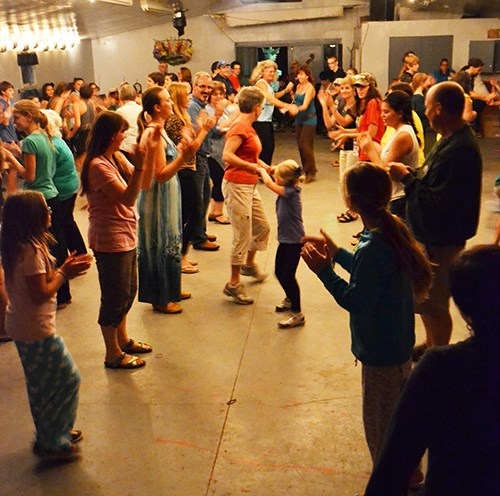Submitted by Michele Amy
Old time dances, that’s what!
And yup! We’re having one – an Old Time Dance, that is - on Friday afternoon, Nov. 30 as part of the Dickens festival!
Didn’t you ever wonder “What the Dickens was happening in Canada during those Victorian times? “And then, sometimes (though few would confess this) “When exactly were those “Dickens” times anyways?”.
Just FYI – I taught history and I had to Google this too!
Charles Dickens, the “Founder of our Feast”, or at least the writer who was the inspiration behind our Dickens Festival, lived from February 7, 1812 to June 9, 1870.
To put that in a Canadian perspective, Saskatchewan as a province did not even exist until 1905, so we were still “Rupert’s Land” at this time.
Many of our settler forefathers came this way by Canoes and Red River carts, because the first train only crossed this territory in 1882.
And locally, in 1882, Cannington Manor was created.
But before all that, during the Victorian time in Canada, (before 1870) The First Nations people were living traditional lifestyles, and were trading with the Hudsons’ Bay Company and the Northwest Company, and the fur trade was thriving.
The Metis Nation had been created out of the unions between Scottish and French traders and the First Nations peoples.
Agricultural settlers from Europe made their way to this area through some of the most adverse conditions for European folk, and only with the help of their First Nations neighbors did they manage to survive and to make a home in this unfamiliar and often hostile climate.
Some early stories from the Oxbow area even tell about families living in “houses” built by digging into the banks of the river, while the homestead was underway!
The settlers to the area brought very few possessions, but those who could, brought their musical instruments. Because what is life without a good party?
My friend, John Arcand, tells a story about his Metis grandfather in the mid 1800’s, who would host the local gatherings at his house.
People would travel from miles around on horseback, in buggies and on foot.
They would arrive with women and children and food and maybe a jug of something, and there would be so many people that the wood stove had to be carried out of the house to make room for everyone.
The fiddler would be perched on the table, pushed into a corner of the room, and he would play all night, keeping the rhythms with his feet and playing the dance tunes as everyone danced their cares and worries away.
Albert Poncelet, from Whitewood area related stories that his grandfather told, which would have been in about the same time frame, about how all the locals would travel from miles around to the schoolhouse, and often by the time they got there in the winter, the fiddles would be all frozen up, and would need some time to thaw.
Albert told me that sometimes, the fiddler only knew a couple of tunes, but he’d play those same melodies as waltzes, as jigs, as reels, as foxtrots and schottisches – whatever people wanted to dance! And folks didn’t mind.
They just wanted the fun and fellowship of the music and the dance.
Children would fall asleep on the piles of fur coats under the tables, and dawn would be breaking before anyone left to go home to morning chores.
That is a precious part of our prairie heritage, and one which is still thriving today thanks to music camps like The Kenosee Lake Kitchen Party.
Well, at the Dickens festival, we’ll have the horse and buggy, and we’ll have the music, thanks to The Happy Wanderers, and this year, we’ll have the dancing.
But we’re not staying up until the wee hours of the morning during the Dickens festival in Carlyle.
Instead, we’ll be welcoming our elders and community members in the afternoon, when driving is a little easier on the nerves and parking is still abundant.
Michele Amy (The Kenosee Lake Kitchen Party) will do some dance instructing, if any young (or young at heart) want to get up and give it a try, or you can just watch and copy the pros as they dance to the waltz, schottische, 7 step, polkas and pattern dances.
It will be a fun addition to the Dickens festival, and a great way of honouring the Saskatchewan Victorian traditions which bring us together as rural communities.
Ěý
Ěý




